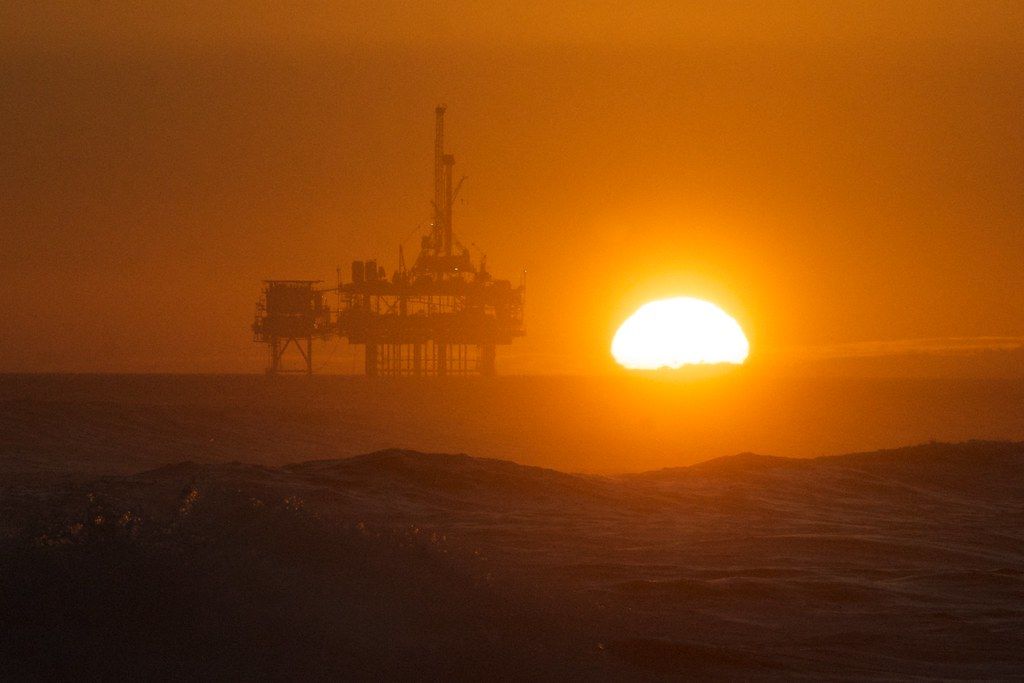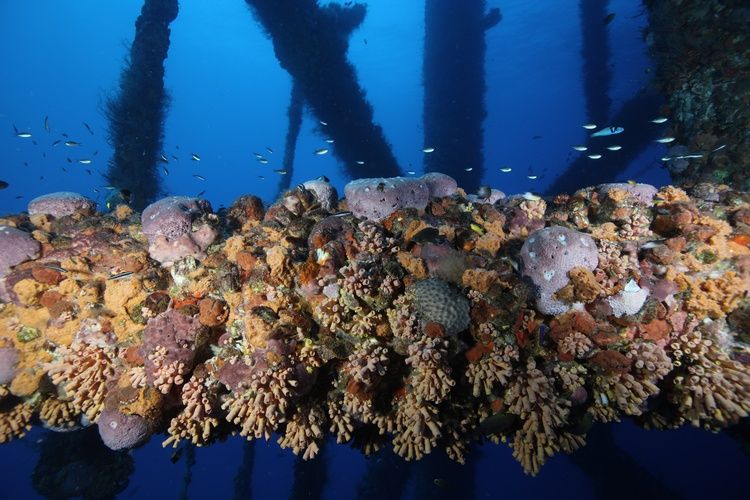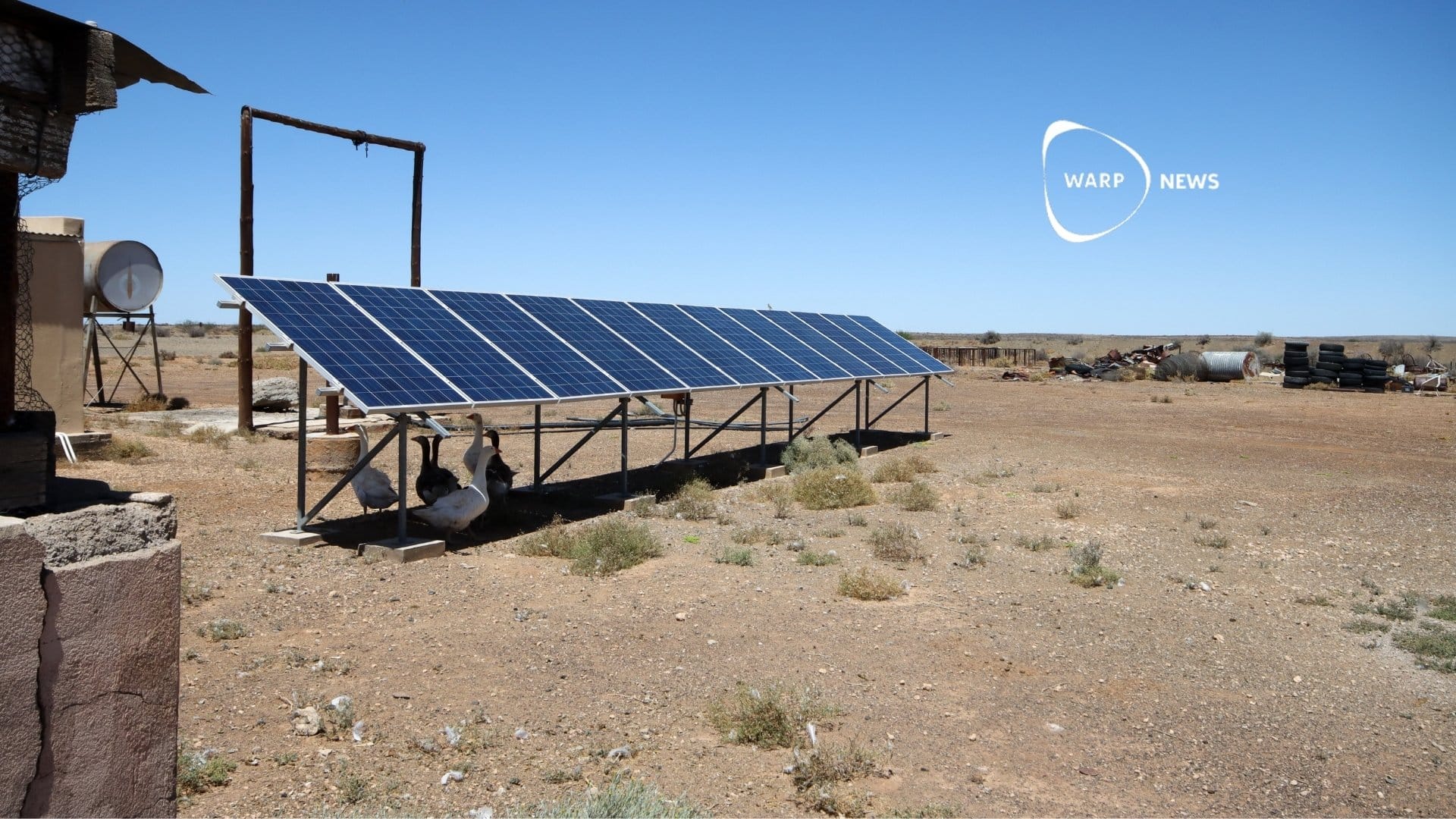
🐠 Abandoned oil rigs are turned into artificial reefs
Instead of removing abandoned oil rigs they should be left on the bottom of the ocean and turned into artificial coral reefs.
Share this story!
The urgency of saving the coral reefs is something everybody’s heard of. Two marine scientists, Emily Hazelwood and Amber Sparks believe abandoned oil rigs to be a solution to the acute problem. Together they have created the company Blue Latitudes and run the Rigs-to-Reefs program.


For the time being, there are 1700 rigs in the Gulf of Mexico and 27 off the coast of California. Hazelwood and Sparks believe these rigs can not only protect but expand, the wildlife we have left.
Sparks and Hazelwood argue that oil companies shouldn’t remove the old rigs but instead leave the submerged sections be.
Can coral really grow on metal? Yes, it can. The rigs metal structure also becomes a home for all sorts of marine wildlife shortly after the platform is installed. FreeThink writes “Seahorses, rockfish, and sponges make their home among the rusty metal beams. The network of beams becomes a nursery for young corals and a refuge for dolphins and sea lions.“

However, turning rigs to reefs isn’t a new idea. In the U.S turning rigs to reefs has been done for about 40 years. Bloomberg Green reports in an article that since the 1980s 560 U.S platforms have been left underwater and transformed into permanent reefs.
Transforming a rig to a reef doesn’t cost much and there are three ways to do it according to the Bureau of Safety and Environmental Enforcement:
- Tow-and-place involves severing the structure from the seafloor either using explosives or mechanical cutting techniques and then towing it to the selected reef for deployment.
- Topple-in-place also detaches the structure from the seabed. The detached structure is then toppled onto its side.
- Partial removal generally does not use explosives. The top portion of the structure is severed at a permitted navigational depth, typically 85 feet deep, and placed on the seafloor next to the base of the remaining structure.
All of the options are for the most part cheaper than taking apart and removing the whole base. FreeThink writes that not removing the rigs, but transforming them to reefs, saves oil companies money, which can be provided to states that agree to take on the responsibility for the reef.
The oil platforms off the coast of California are some of the most productive marine fish habitats. The California rigs are usually massive and some of them would stand taller than the Eiffel tower on land.
According to the Bureau of Safety and Environmental Enforcement 558 platforms previously constructed on the U.S. Outer Continental Shelf have been transformed into artificial coral reefs in the Gulf of Mexico as of September 2020.
The big question is if the reefs are good or bad for the ocean? Marine biologist Milton Love who researches fish species around gas and oil platforms in California states that abandoned oil rigs are among the most viable fish ecosystems on the planet.

Due to overfishing along the U.S West Coast, the rockfish stock has been seriously weakened. Fortunately, the rigs are helping. Now the species can be found in large numbers close to oil platforms. The artificial reefs also aided the recovery of the critically endangered bocaccio rockfish. Love explains to BBC Future:
"We've found a very high density of young bocaccio at platforms, around 400,000 at six platforms. We didn't see that at natural reefs,"
Sparks and Hazelwood have reefed rigs since 2014, saving at least a dozen large marine ecosystems, from Thailand to West Africa. Sparks told BBC Future:
"We're trying to help the general public understand that conservation isn't always just about saving the whales. There are other ways we can look at complex ideas in our oceans, such as repurposing manmade structures like artificial reefs."
Picture: "Huntington Beach Trip - Aug 2014 - Sunset over the oil rig." by pmarkham
By becoming a premium supporter, you help in the creation and sharing of fact-based optimistic news all over the world.


